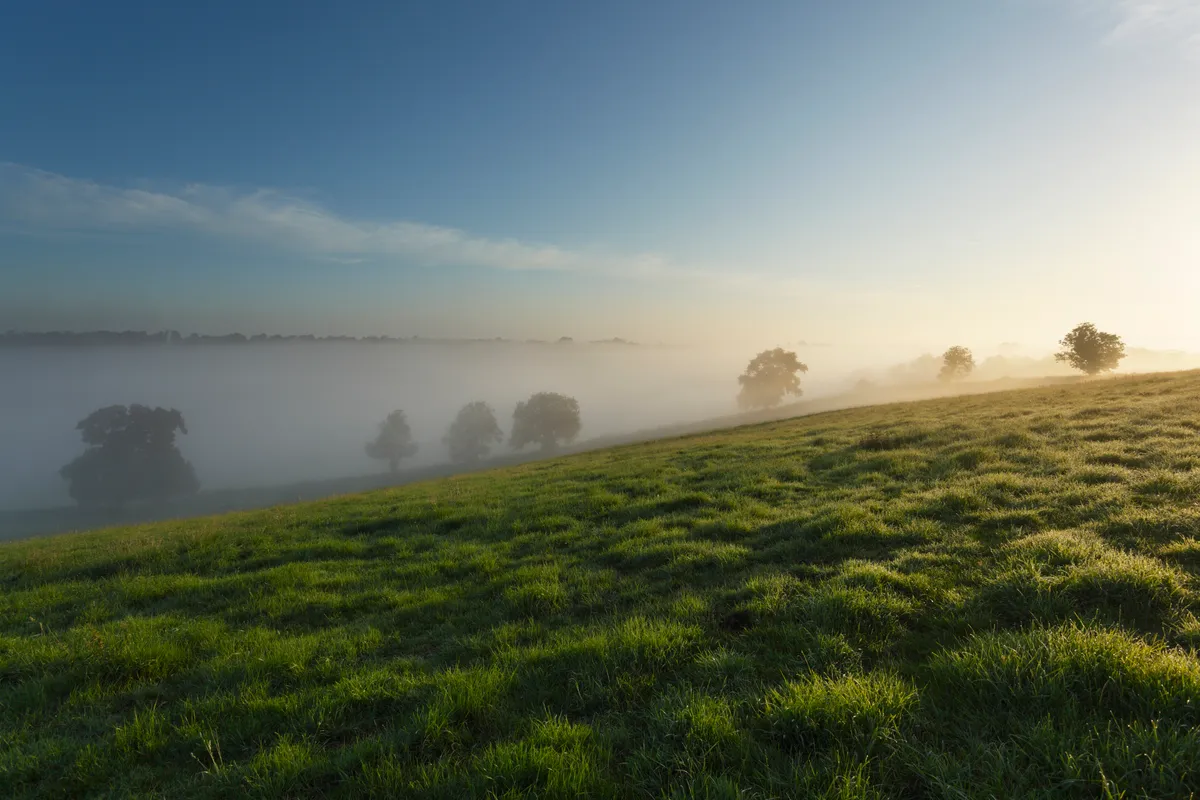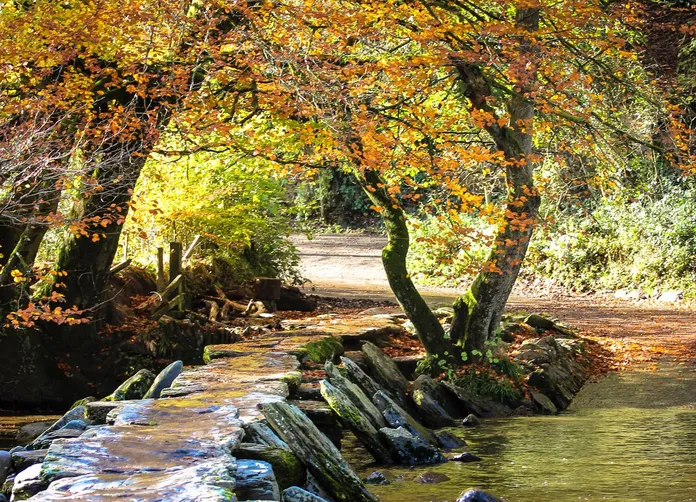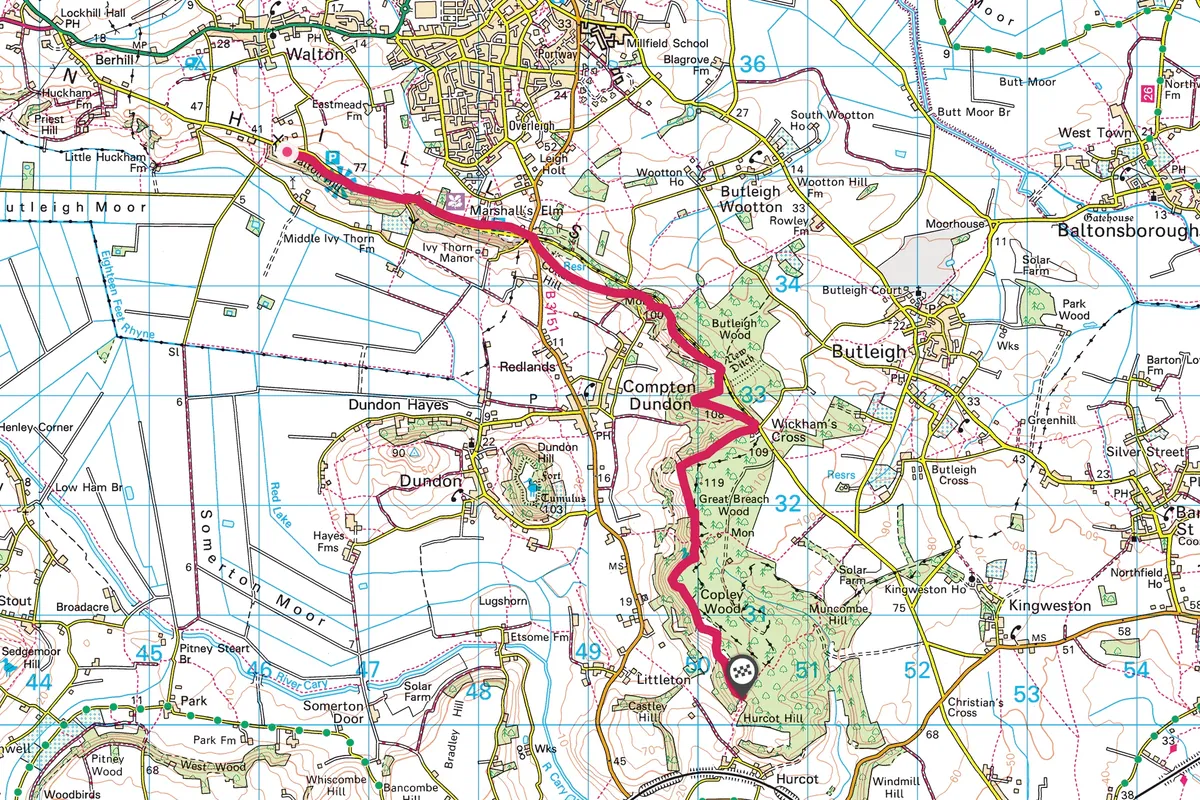A 12-mile hike along the Polden Hills main ridge through beautiful woodland and grassland.
Between the Mendip and Quantock Hills, the Somerset countryside is famously flat. But, running parallel with these well-walked ranges is a lesser-known ridge quietly crossing the otherwise-level landscape.
The Polden Hills may be more modest in both height and length, but what they lack in size they more than make up for with a richness of natural beauty. A dedicated footpath runs along the eastern end of the Poldens, following the tops of steep, scarped slopes and the edges of ancient woodland. In June, a wealth of wildflowers and wildlife waits to be found, including the beautiful large blue butterfly.

1. Orchids aplenty
The Polden Way starts at the old windmill on Walton Hill, a short walk west from the National Trust car park. Built in 1741, this was a working mill until the early 1900s, but is now a private residence. From here, follow the blue butterfly waymarkers past the cross-shaped trig point to Ivythorn Hill. Search for orchids in the meadows by the Swiss-style youth hostel. The pale blooms of common spotted orchids are easiest to see, but you may also find hot-pink pyramidal orchids and rarer greater butterfly orchids. Genuine butterflies flit among them, including meadow browns and ringlets.
Related articles

2. Back from the dead
After crossing the road (with care) at Marshall’s Elm, follow the blue-topped marker posts to Collard Hill. This is one of a handful of sites in the country where large blues can be seen. After becoming extinct in the UK in 1979, the species was reintroduced here (and at other places in the Poldens) in 2000.
For the best chance of a sighting, explore the steep, south-facing slopes of Eastern Glade (marked by a large blue flag), which resemble terraced rice-paddy fields. Despite its name, the large blue is only marginally bigger than the similar common blue. But spot a denim-coloured butterfly with a distinctive dark ‘paw mark’ on its upper wings, perched on pink wild thyme flowers, and you have your insect!
If you don’t get the blues, there are plenty of other butterflies to enjoy. Marbled whites will be your constant companions, while small heaths dance over the dry grass like tiny flames. The site also attracts a wealth of birdlife. Blackcaps, chiffchaffs and whitethroats sing from the hawthorns and flowering elder, and green woodpeckers feed from the countless anthills.
Large blue
This is the largest and rarest species of blue butterfly in Europe and can be seen – though rarely – flitting among well-drained unimproved grassland in south-west England. It has an average wingspan of 38–44mm (male to female) and a clear row of black spots on its upper forewing. Large blues have a remarkable life cycle, the caterpillar spending most of the year feeding on grubs within the nests of red ants.

3. Mendips view
When you’ve had your fill of blue butterflies (as if!), follow the signs to Windmill Hill and the Hood Monument. This 33m column is a memorial to Naval Commander Sir Samuel Hood, who was born in the nearby village of Butleigh. The view north to Glastonbury Tor – and the Mendips beyond – is framed by a gap in the trees.
The path continues to Combe Hill – a good spot to stop for a halfway picnic, with fine views of Dundon Hill opposite. After crossing the wooden footbridge at Combe Hollow, the route returns to follow the ridgeline, weaving in and out of Great Breach Wood and skirting the grassy slopes of Gilling Down.
4. Flying farewell
Turn around at Hurcot Hill to spot more winged wonders on your way back to the beginning. In open areas, look out for the brown argus and the green hairstreak. Sharp eyes may catch sight of a purple hairstreak flying high among the oaks, or the orange flash of a silver-washed fritillary crossing a woodland ride.
Map
Click on the map below for an interactive version of the route.

